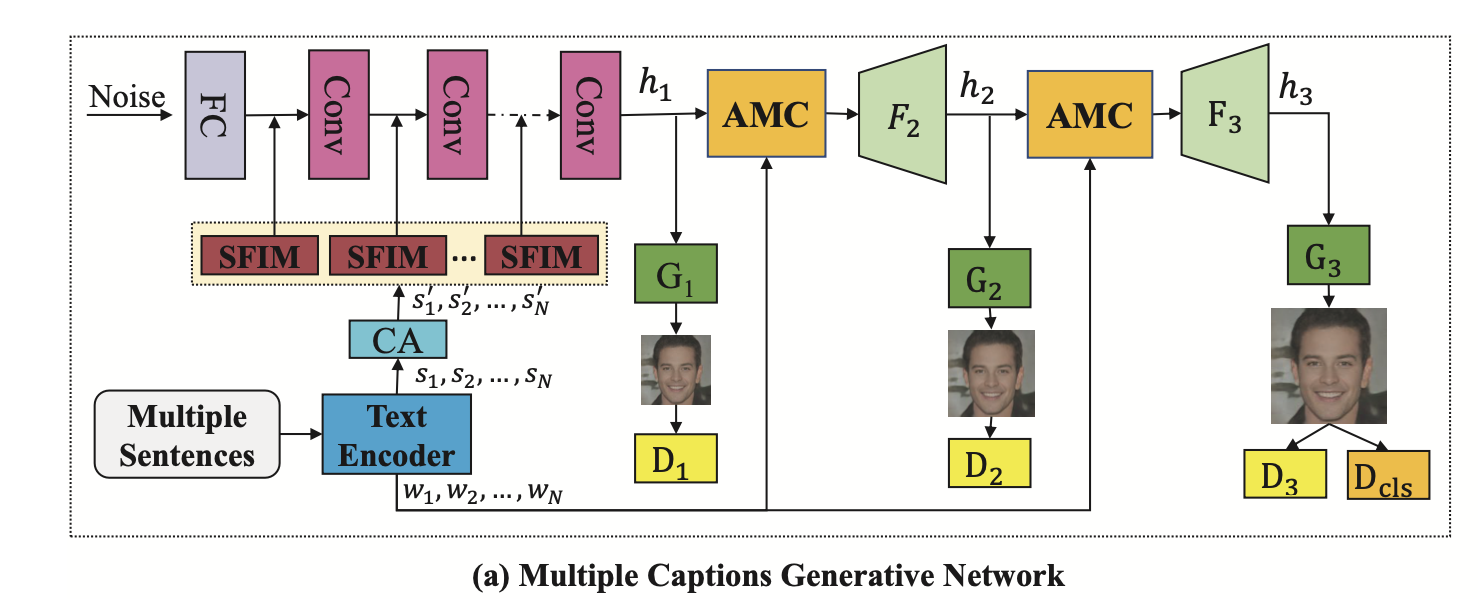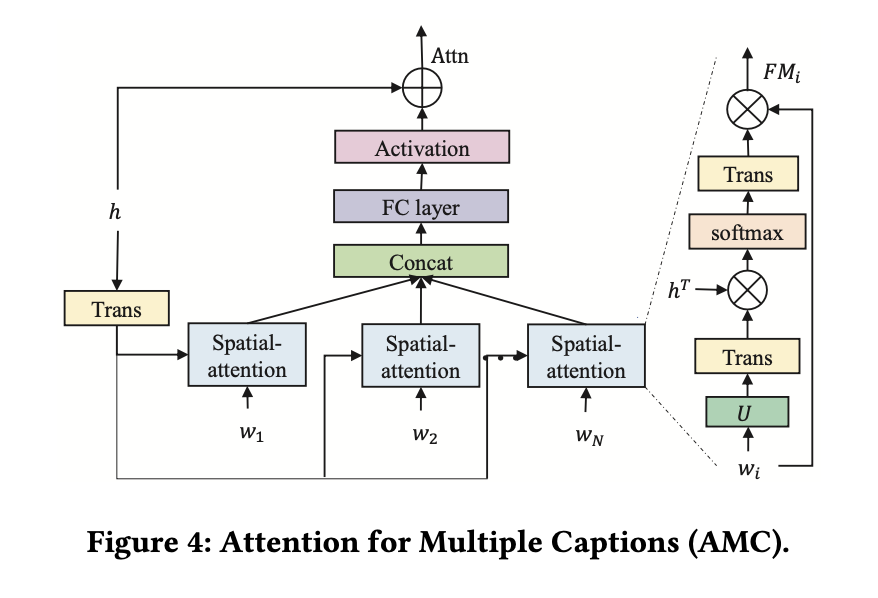Multi-caption Text-to-Face Synthesis: Dataset and Algorithm
1.What is this paper about?
It proposes the novel Text2Face model(SEA-T2F) with multi-captions and large-scale text-face dataset. Speficicaly, it introduce the sentence feature injection module, attention module and attribute loss.
2.What’s better than previous paper?
Originally, one caption is not enough to match the users’ preference for text2face task. In this paper, it publish the high quality text-face dataset, so it can use multi-caption. For this task, it propose novel model, then it can generate more high quality face images than exsiting mode with multi-captions.
3.What are important parts of technique and methods?
This is the overall of SEA-T2F.

This model adapt the multi-GAN and doesn’t concat the noise and sentence vector but only noise as input.
- SFIM It aims to multi-sentense to inject in the model. In upsampling archtecture, it injects sentence info between each layer as following Fig.

- AMC たくさんの単語を、視覚情報と結びつけることができるattention機構を提案した。 具体的には、Speatial-attentionを並列に結び付けることで、computation costを削減し、複数単語-visual infoのcross informationの獲得を可能にした。

4.How did they verify it?
複数文章で画像を生成するexsistingモデルは、提案手法がほとんどなく、あったとしても莫大なcomputing costを有し、実用性がとても低いため、このモデルは、1-captionの顔画像生成を用いて評価を行った。
具体的には、1-caption text-faceモデルの(AttnGAN, ControlGAN)と、1つの文章を10個copyして10-caption text-faceモデルを使用して定性的、定量的比較を行った。
いかにそれらの評価結果を示す。

metricsとしては、Inception Scoreと、top-5 image retrieval accuracy (Top-5 Acc)の二つを用いた。 前者は、画像のquality、後者は画像とtextのmatch度を示したものである。
さらに、複数文章が存在するCUB datasetを使用して、text-imageモデルを生成した。 先ほどの評価と同様に、1-captionで画像を生成しても、高い精度の画像を生成することができた。 それらの、結果をqualitative、quantitativeの表にまとめた。その結果を以下に示す。

1-caption to image synthesizeの分野においても、先行研究より優れた画像を生成することができた。
さらに、10-captionsを使用して顔画像、鳥画像を生成した結果をいかに示す。

